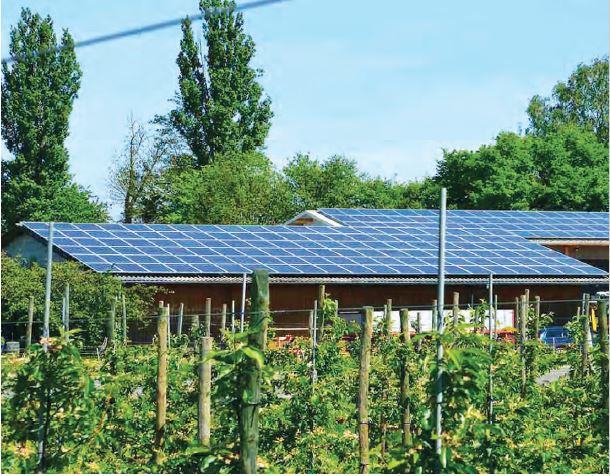 |
|
 |
STORY
DETAILS |
 |
|
| |
| |
 |
| Cover Story
|
 |
 |
| Textiles’ – the word brings up images of beautiful drapes – cotton, silk, chiffon, lace. Whether it is the material draped on the figurine of the lady f... |
|
 |
| |
read more... |
 |
|
 |
Lead Article
Textiles the word brings up images of beautiful drapes cotton, silk, chiffon, lace. Whether it is the material draped on the figurine of the lady from Mohenjadaro, the stylish drapes of Cleopatra, the ball dance gowns of the Victorian Era or the lovely dresses worn by our own queens and princesse...
read more... |
|
 |
| Articles |
 |
 |

|
|
Tapping Sustainable Energy Alternatives
|
|
|
The second lead article, which is also focus article, is written by Shri N Bhadran Nair. Citing a report of the World Health Organisation, the author has advocated for tapping sustainable energy alternatives
|

|

|

|

|
|
Financing Renewables in India
|
|
|
The third article is written by Shri P C Maithani, Adviser, Ministry of New and Renewable Energy. He has focussed on renewable energy resources
|

|

|

|
|
Steps to Achieve India’s Solar Potential
|
|
|
The special article is written by Sumant Sinha, Chairman and Managing Director of ReNew Power. He opines that India must also honour its global commitments on curbing greenhouse gas emissions
|

|

|
|
|
|
|
|
|
|
The informal sector: the role of urban commons
Rajesh Bhattacharya |
|
 The informal sector1 is central to livelihoods of the majority of the labour force in India. According to the twelfth five-year plan, the informal sector accounts for more than 84 per cent of the total labour force (Planning Commission, 2013). Since independence, India has experimented with economic regulation till mid-1980s and economic liberalization thereafter. The informal sector has been a thorny policy question in both regimes, though often not recognized as such in academic and policy discussions which tend to be dominated by issues relating to the formal sector. One need only remember the role assigned to the ‘small and household industries’ in P.C. Mahalanobis’s second five-year plan frame and the remarkable policy of reservation of products for small scale sector in the late 1960s and 1970s to appreciate the salience of the informal sector to the employment question in pre-liberalization era. Similarly, the emergence and consolidation of the agenda of “inclusive growth” in the last decade points to the prevalence of informal production despite higher overall growth rates since the 1980s and hence, the exclusionary nature of economic growth in post-lib Two developments have enormous implications for the informal sector in India in the coming decades—rapid urbanization and an expanding and younger labour force. Within the next three decades, half of India’s population will be urban and India will lead the globe in rate of urbanization (Swerts et al, 2014). The informal sector1 is central to livelihoods of the majority of the labour force in India. According to the twelfth five-year plan, the informal sector accounts for more than 84 per cent of the total labour force (Planning Commission, 2013). Since independence, India has experimented with economic regulation till mid-1980s and economic liberalization thereafter. The informal sector has been a thorny policy question in both regimes, though often not recognized as such in academic and policy discussions which tend to be dominated by issues relating to the formal sector. One need only remember the role assigned to the ‘small and household industries’ in P.C. Mahalanobis’s second five-year plan frame and the remarkable policy of reservation of products for small scale sector in the late 1960s and 1970s to appreciate the salience of the informal sector to the employment question in pre-liberalization era. Similarly, the emergence and consolidation of the agenda of “inclusive growth” in the last decade points to the prevalence of informal production despite higher overall growth rates since the 1980s and hence, the exclusionary nature of economic growth in post-lib Two developments have enormous implications for the informal sector in India in the coming decades—rapid urbanization and an expanding and younger labour force. Within the next three decades, half of India’s population will be urban and India will lead the globe in rate of urbanization (Swerts et al, 2014). |
|
|
|
|
|
|
|
|
|
|
 |

|
Regional Languages
|
 |
|
|
 |
|
Regular
Column |
|
J&K Window : |

|
|
Do you know? : What is Forensic Auditing |
Forensic auditing refers to the auditing with the main aim to employ accounting techniques and methods to gather evidence to investigate the crimes on financial front such as theft, fraud etc.

|
|
|
 |
|
 |
 |